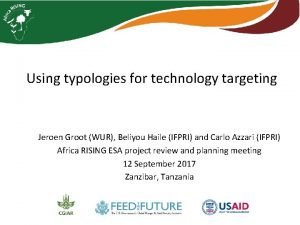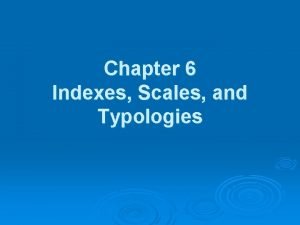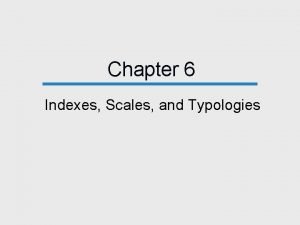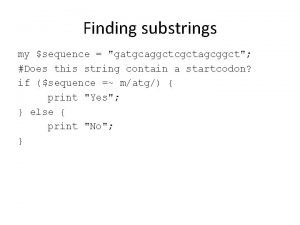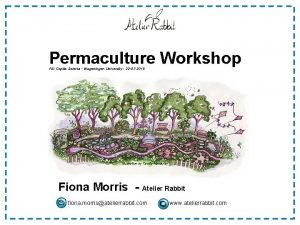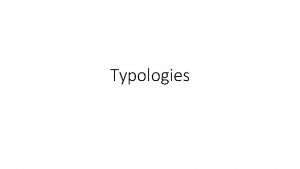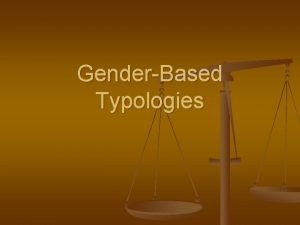Using typologies for technology targeting Jeroen Groot WUR








- Slides: 8

Using typologies for technology targeting Jeroen Groot (WUR), Beliyou Haile (IFPRI) and Carlo Azzari (IFPRI) Africa RISING ESA project review and planning meeting 12 September 2017 Zanzibar, Tanzania

Using typologies for targeting § We assume that: technologies are suitable for specific farms or farm types, dependent on, e. g. : § Farm size § Production orientation § Farmer perspective and ambitions § To scale out to new farms we have to identify the farm type to propose the most promising interventions

Assigning farms to an existing typology § Steps: § § § Statistical typology: 4 farm types in each country Identify 10 -15 most discriminating variables RDA Collect data on farm for the 10 -15 variables Calculate probability of belonging to each type NBC Farm is assigned to the type with highest probability § We performed an in-silico experiment following these steps § RDA = redundancy analysis § NBC = naïve Bayesian classification

RDA result: selected variables RDA = redundancy analysis

NBC result: allocated farm types § Used randomly selected 75% of the dataset to train the NBC § Tested allocation of 25% dataset to farm types (115190 farms, dependent on dataset size) § High percentage of correct allocations to types: § Tanzania: 83. 2% § Malawi: 82. 1% § Ghana: 88. 8% NBC = naïve Bayesian classification

Next step: allocate technologies to farms § Using similar approaches and statistical techniques § Combining typology (ARBES) databases with spatially explicit socioeconomic and biophysical datasets § Using a small set of variables collected on farm by advisors or the farmers § Generating ranked lists of most promising set of technologies for a farm, given its: § Farm features § Socio-economic environment § Biophysical conditions § Move from “suitable for” farm types, to “suitable for” farms

Targeting: dealing with differences § Taking into account: § Biophysical conditions (using spatial data) § Socio-economic setting (using multiple datasets, ARBES/typology data) § Farm structure and endowment and household structure and relations Biophysical DB Farm data (10 -15 variables, problems, prefs) Technology suitability ranking Handheld device App Matching algorithm Socio-econ. DB Website PC Application Cloud DB

Thank You Africa Research in Sustainable Intensification for the Next Generation africa-rising. net This presentation is licensed for use under the Creative Commons Attribution 4. 0 International Licence.
